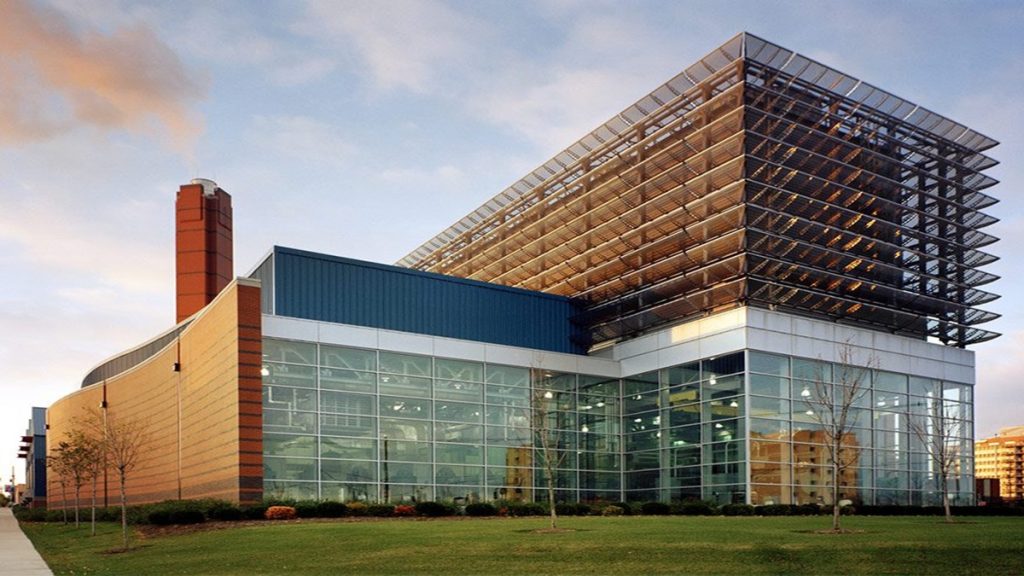In August 2023, the University of Cincinnati (UC), USA, launched its new School of Environment and Sustainability Studies. As a recognized leader in this domain, the university preaches sustainability and practices the core principles in its day-to-day operations. We will look at one aspect of how this world-class research institute navigates the challenges of on-campus power generation as it strives to stay a beacon of sustainability.
Due to the diverse and large energy demand, it is not uncommon for US universities to have onsite power plants to provide electricity, heating, and cooling, in some cases for the institution and other infrastructures. With sustainability being a critical part of UC’s Strategic Direction, UC’s state-of-the-art district energy system exemplifies how universities can take up the challenge of producing energy sustainably.
As we step into UC’s energy narrative, let’s rewind to 1910, when the inaugural power plant graced the UC main campus, serving a mere 800 students. Fast forward to today, the plant now serves approximately 50,921 students. Alongside the affiliated hospitals, they collectively consume around 50MW of power. To put it in perspective, that’s adequate to illuminate 40,000 Ohio homes. UC Utilities can comfortably cater to its 75 campus buildings and six hospitals. Having the ability to generate energy onsite also allowed the university to avoid tuition increases and helped in dedicating more resources to support health care, research, and education on campus.
As it keeps its promise to become greener, in 2018, UC started to procure wind-generated electricity to power up all four regional UC campuses and all off-campus UC buildings. This has not only reduced the cost of energy but will also reduce 117,234 tons of emissions by 2024 and is equivalent to eliminating more than 129 million pounds of coal or 291,222,285 miles driven by an average gasoline-powered passenger vehicle.
UC Utilities, the key organization that manages the production and distribution of energy, lives by the mantra that a ‘World Class University’ is to be supported by a ‘World Class Utility.’ The main workhorses that help enable this mission are two power plants known as the Central Utility Plant (CUP) on the Uptown West campus and the East Utility Plant (EUP) on the Uptown East campus. Geographically separated but united in purpose, they deliver electricity, steam, and chilled water through a 35-mile labyrinth of underground pipelines and tunnels. Both the power plants generate steam and chilled water for heating and cooling, respectively, but only CUP – a state-of-the-art, high-efficiency cogeneration plant, which is twice as efficient as most typical power plants in the region – generates electricity.
Cogeneration, the magic word here, is changing the energy landscape. At the heart of the CUP are two 12.5 MW Combustion Turbine Generators (CTGs), whirling into action as a hot mixture of air and natural gas combusts, and the combustion products surge through their turbine blades. This kinetic energy translates into electricity, but what about the waste heat from the combustion? Enter two Heat Recovery Steam Generator (HRSG) units, capturing this energy and converting water into steam using that waste heat. This steam, in turn, powers a steam turbine generator (STG), delivering even more electricity to the campus. This innovative system maximizes efficiency, ensuring every ounce of energy is put to good use.
This dual-generation system isn’t just efficient; it’s incredibly versatile. Depending on factors like season, demand, and fuel prices, UC can channel its electricity to the campus or feed it back into the grid. Alternatively, the recovered thermal energy can keep the campus warm, reducing the need for steam from the boilers. This energy innovation translates into green savings, saving UC a staggering US$109 million since 2004. It’s a dynamic dance of energy, all orchestrated to cut costs and reduce UC’s carbon footprint.
UC Utilities’ energy endeavors go beyond just operations. As a preacher of sustainability, it offers a unique opportunity for the students to witness theoretical concepts in real-time action. From understanding the plant’s operations and maintenance to diving deep into energy production, efficiency, and emission reduction, the university provides hands-on experiences that empower the minds of tomorrow.
These initiatives have paved the way for UC Utilities to be recognized internationally, including winning accolades like the Association of Energy Engineers’ Institutional Energy Management of the Year. This transformative journey of a century can be a source of inspiration for organizations pursuing sustainability.
Sid Thatham is an Energy Engineer in the University of Cincinnati (UC) Department of Utilities. He graduated from UC with a master’s in chemical engineering and an MBA. He also teaches as an adjunct in the university’s College of Engineer and Applied Sciences.
UC Utilities, the key organization that manages the production and distribution of energy, lives by the mantra that a ‘World Class University’ is to be supported by a ‘World Class Utility.’ The power plants generate steam and chilled water for heating and cooling. CUP – a state-of-the-art, high-efficiency cogeneration plant–twice as efficient as most typical power plants in the region–generates electricity.
